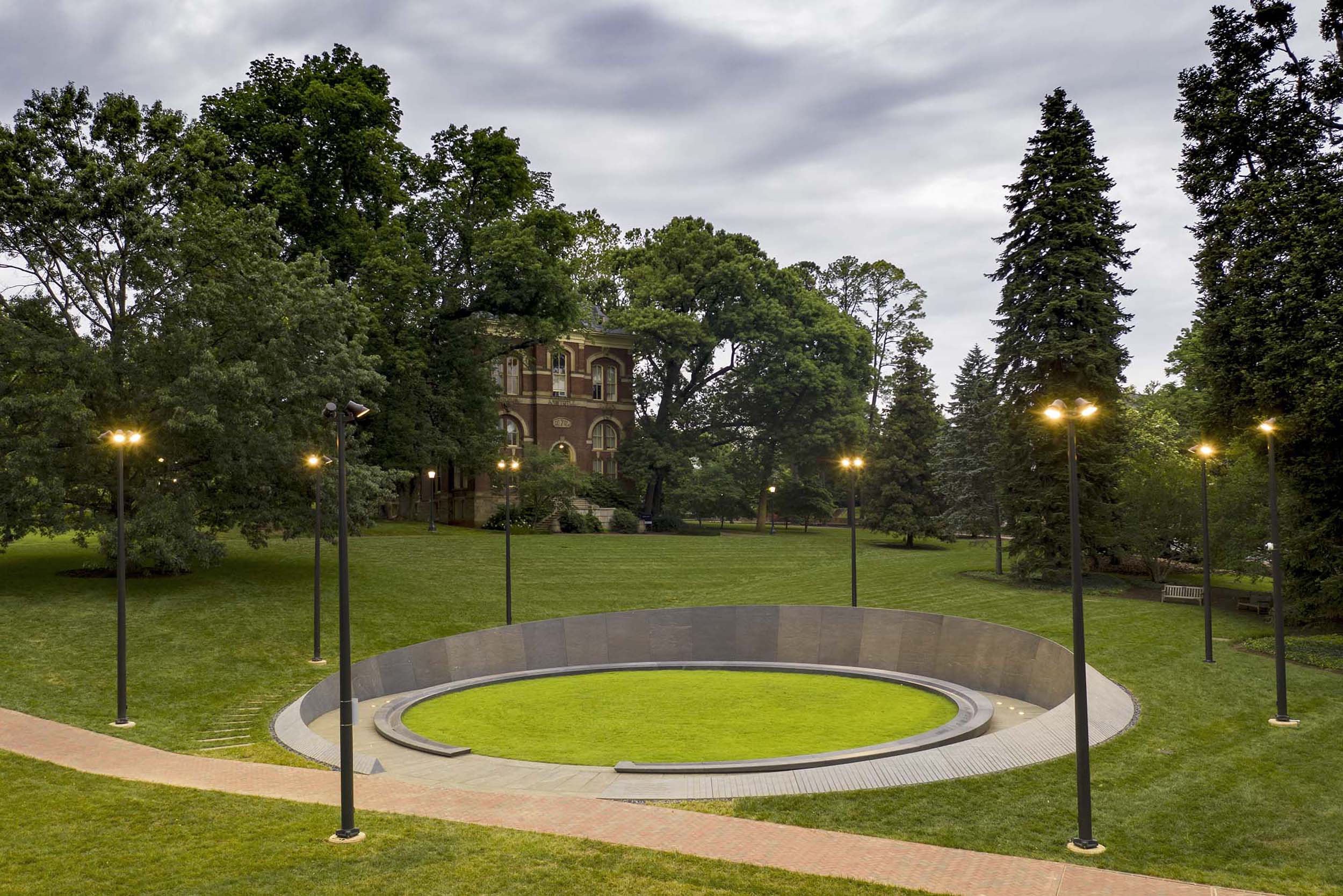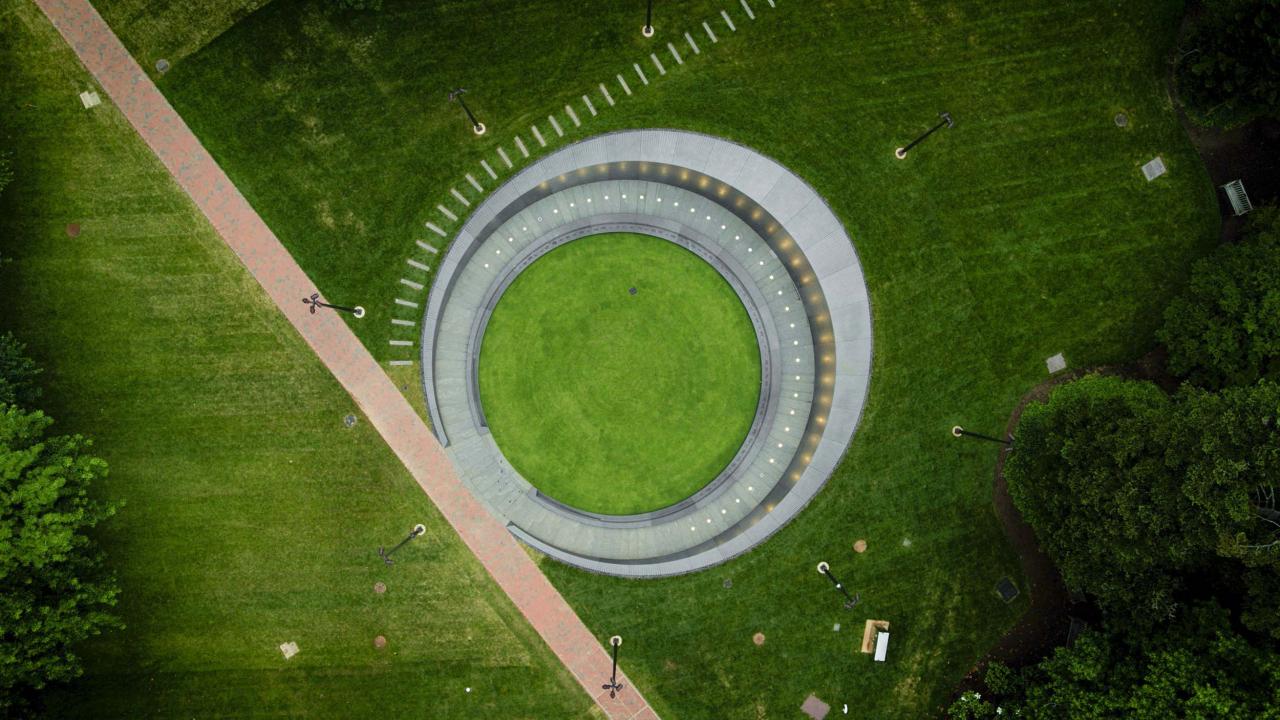The virtual dedication ceremony of the University of Virginia’s Memorial to Enslaved Laborers today brought together many of the people who strived to create the monument that honors the lives of those who built and sustained the early University – and whose work had been hidden or forgotten over many years.
Alumni and UVA leaders recalled the efforts that members of the University community undertook more than 10 years ago to situate a memorial on Grounds, within the boundary of the UNESCO World Heritage site, “to be a space of reflection and healing, a space of truth-telling,” as alumna Jessica Harris said in her introduction.
Although the memorial was completed early in 2020, the coronavirus pandemic cancelled the plans for a dedication event last year that would have brought people together in person. Many of the participants in Saturday’s ceremony took turns, one by one, to stand at a lectern placed in the center of the memorial’s inner circle to talk about how they came to understand the significance of reckoning with the untold narratives of the University’s history. Members of Chihamba, a Charlottesville-based African dance troupe, also visited the site and performed with drumming and dancing.
Descendants of enslaved laborers, including those who’ve recently formed a descendants’ group, talked about their history and their aspirations, and thanked their ancestors for their perseverance and resilience. Many of the speakers called for the University to continue initiatives to combat racism and to expand equity, saying the memorial is just the beginning.
“In order for us to continue to move forward in striving for equity, in striving for change,” Harris said, “we have to be able to talk about our past in a way that’s really meaningful. And a memorial, I think, is a beautiful first step in starting that conversation.”









